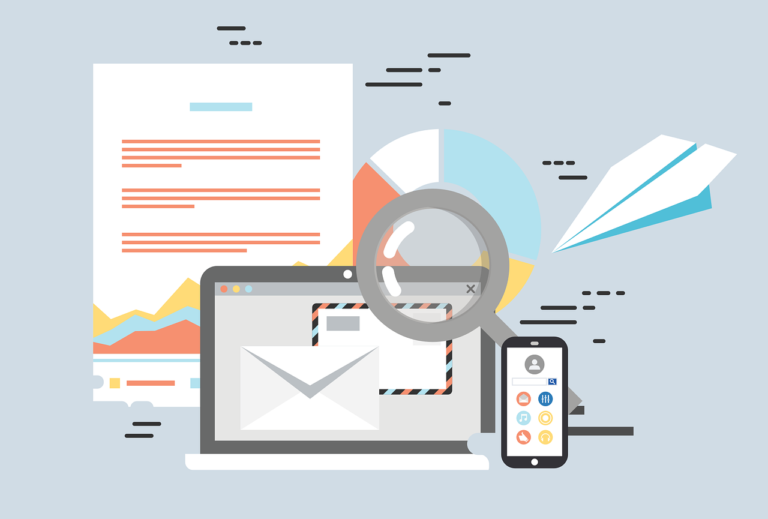Being a business owner is often like being the ringleader of a circus; you’re constantly juggling money, people, customers, equipment, and maybe even animals, depending on your business (or what you classify as an animal). The more of those things you can reign in, the better, so in this blog we’re going to look at how you can get your budgets into shape by getting (and staying) in control of your costs and investments.
Costs vs investments
First things first, what’s the difference? A cost is something that you have to incur – an expenditure of money, time, or resources – and it’s probably not going to make you any money. An investment is still a cost, but it has a strong possibility of a return.
When we’re determining whether something is a cost or an investment, we look at the benefit that we’re going to get from it. As an example, let’s talk about hiring a new marketing person. Hypothetically, it’s going to cost around $2,000 a month for a marketing person, so what does your business need to get back from it to cover their costs, and make the profit that you want to make? Is that investment going to continue to deliver profit and extra cash flow, even after you’ve stopped paying it? We call that a return on investment.
Another (arguably more exciting) example could be buying a coffee machine for your business. If you’re replacing your current coffee machine, that’s a cost and not an investment. If it’s a flash new coffee machine that can produce jazzy, barista quality coffees that get your staff excited and stop them from walking down to the coffee shop every couple of hours for 30 minutes at a time, you can probably justify that as an investment because it’s going to pay for itself in staff time and productivity. And you’re also an awesome employer for providing free coffee!
A bigger ticket investment could be buying a business. How quickly it pays for itself will determine the return on your investment. Most people want the business to pay for itself within two to three years, but is that realistic? Are you paying too much (or not enough)? You need to evaluate the outgoings vs your investment, ideally with the help of a professional to make sure you’ve run the numbers before you invest.
The art of determining a viable purchase
The greatest tool you can use is a budget and a cashflow forecast. Let’s use a business called Harry and the Potters as an example (this is not a real business, but we’re going to make them sound pretty cool). It’s a pottery business – owned by Harry, obviously – and it supplies handmade cups and saucers to local cafes.
We set a budget for Harry’s business, and he’s happy with it. Harry then decides he wants to invest another $5,000 in a new kiln, because it’s going to (literally) blow his other one out of the studio and save his team loads of time. Sweet as Harry, we’ll factor that into the cash flow. That obviously reduces his cash now, so we need to figure out what that’s going to do to his business. To do this, we use the budget cash flow tool to see what the payback period will be, which will tell us how long Harry has to go backwards in cash before he can go forward (which is quite often the case). Basically, we look at how long it will take for the dip of the cash flow curve to come back up, and Harry can start making a profit again. If that period is a very long time, it’s probably not a viable purchase for our mate Harry. But if it’s sooner, then it probably will be!
Investments that pay off
Every business has to invest, and there’s always going to be a payback period. Generally, hiring more staff in certain positions will pay off; like a marketing person to raise brand awareness and in turn revenue, or developers making a software product faster and more efficient for its users.
A manufacturing business might invest money in additional or better equipment, which will automate manual processes and in turn cut down on errors that might be happening in the factory. That means less time being spent on fixing things and a faster output of products, which equals more cash flow! But these things don’t pay for themselves overnight – it can take a couple of years – but the savings that the equipment provides will continue to be made after its payback period for a long time after it’s been paid off.
Investments that don’t pay off
Investments can go wrong when people invest in a beloved salesperson or business development manager that’s going to ‘turn the business around’; a person that will go out and make a bucket load of sales. Realistically, if you’re putting all your faith into hiring this one person and it doesn’t work out or they take longer than expected to get up to speed, it can take a long time for you to recover your investment, which you most probably haven’t accounted for in your cash flow. That’s why it’s vitally important to forecast and assess the return and set KPIs to keep the person accountable to what they need to achieve for your business to make the investment worthwhile.
Back to the future
With your investments, you need to also take into account the fact that you’ll most likely go backwards in cash before you can go forwards. This is a very common business experience, but lots of people really struggle with the concept. So, how do you change your mentality around it? The best thing you can do is be aware and be prepared with your budget and forecast.

How does this work? Let’s say we’re doing a cash flow forecast for a ‘normal’ business. We factor in 12 months in a year (yeah, we know that part’s not rocket science), and realistically there might be three of those months where the business goes backwards in cash flow. We know that can be quite scary, but if you’re prepared for it and we’ve forecasted those months of backwards cash flow, it’s easier to get your head around it. For example, in January most businesses have to pay GST, provisional tax, and holiday pay; and factoring in slow paying customers, we know that generally at this time most businesses’ cash flow goes backwards.
To mitigate this, we need to forecast how much we need to have in the bank before we get to January, so we know that we’ve got enough in the reserves to cover it. Then it’s not a problem because you know it’s coming, and you’re prepared for it – it’s a normal part of your business that we’ve accounted for.
Financing spend when the coffers are low
There are lots of ways to finance a company if it has good future profitability but hasn’t got any money now. You could talk to the banks (give the Bank of Mum and Dad a nudge if that’s available to you), talk to second tier lenders, or even go down the crowdfunding route. There are always options; it just depends on how much time you want to invest and whether your business is in a state where it can borrow money.
That’s why having a good budget and forecast that’s updated on a regular basis is super important. It means that banks can always look at your forecasts and assess the viability of the investment. I can’t stress this enough; forward planning, cash flow forecasting, and budgeting will help you get money in the future!
Be prepared for investment opportunities
The key to being prepared is having a really good relationship with your bank. At the end of the day, a bank that wants 400 forms filled out every time you apply for a new loan is just not going to work for you. But, if you’ve got a bank that understands your business and you’ve been continually meeting or beating your budgets, updating your forecasts, and communicating with them online and in person on a regular basis, that will help a lot. Having a great accountant will also really work in your favour and give the bank faith in your business.
Working with the right people
Work with an expert who knows damn well what they’re doing, helps you to understand which investments are going to give you the return you need, and has your business’s best interests in mind.
Want to know more about us? Then, let’s chat to see if we can make great business together.






